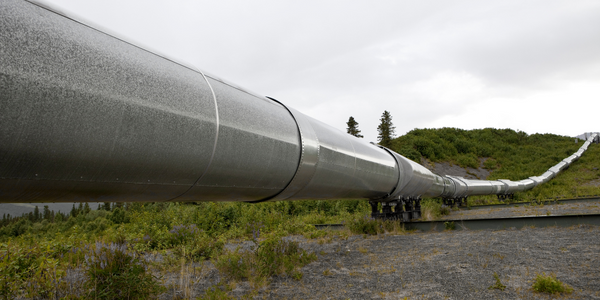Customer Company Size
Large Corporate
Region
- America
Country
- United States
Product
- Forcepoint Insider Threat
Tech Stack
- Data Loss Prevention
- Behavioral Analytics
Implementation Scale
- Enterprise-wide Deployment
Impact Metrics
- Brand Awareness
Technology Category
- Cybersecurity & Privacy - Database Security
Applicable Industries
- Oil & Gas
Applicable Functions
- Business Operation
Use Cases
- Cybersecurity
Services
- System Integration
- Data Science Services
About The Customer
A Fortune US 100 & Fortune Global 500 Energy company is engaged in every aspect of the oil, natural gas, and geothermal energy industries. These include hydrocarbon exploration and production, refining, marketing and transport, chemicals manufacturing and sales, and power generation. The company manufactures and sells products such as fuels, lubricants, additives, and petrochemicals, with alternative energy operations including geothermal, solar, wind power, biofuel, fuel cells, and hydrogen.
The Challenge
The company stores a variety of valuable data: internal patents, intellectual property (IP), merger and acquisition data, machine schematics, and geological data like potential drill sites. Many of those with access to this sensitive data are temporary contractors, employed for only a brief period of time. Understanding the higher risk that accompanies shorter-term employees, company leaders brought in third-party analysts to do an assessment of insider threat risk. Analysts found that data was indeed leaving the company, and that nearly half of the data loss incidents were directly related to the actions of negligent or malicious insiders. Upon hearing the results, company leaders authorized the creation of an internal insider threat task force.
The Solution
The company implemented Forcepoint Insider Threat to secure their critical data. The product was initially deployed in a pilot program with 1,100 licenses and underwent a rigorous testing period. Within weeks, the product surfaced two separate cases of access abuse by privileged users—employees exfiltrating sensitive data. The Forcepoint team spent several months working closely with the company’s leaders to understand their desired business and security outcomes. In addition to the initial product onboarding, countless hours were spent conveying the corporate vision, Forcepoint’s human-centric cybersecurity strategy, and product roadmap. The management team appreciated how Forcepoint Insider Threat could integrate with other Forcepoint—as well as third-party—solutions to provide a more comprehensive overall security posture. The company moved forward with the purchase of 80,000 seats of Forcepoint Insider Threat.
Operational Impact
Quantitative Benefit

Case Study missing?
Start adding your own!
Register with your work email and create a new case study profile for your business.
Related Case Studies.

Case Study
Taking Oil and Gas Exploration to the Next Level
DownUnder GeoSolutions (DUG) wanted to increase computing performance by 5 to 10 times to improve seismic processing. The solution must build on current architecture software investments without sacrificing existing software and scale computing without scaling IT infrastructure costs.

Case Study
Remote Wellhead Monitoring
Each wellhead was equipped with various sensors and meters that needed to be monitored and controlled from a central HMI, often miles away from the assets in the field. Redundant solar and wind generators were installed at each wellhead to support the electrical needs of the pumpstations, temperature meters, cameras, and cellular modules. In addition to asset management and remote control capabilities, data logging for remote surveillance and alarm notifications was a key demand from the customer. Terra Ferma’s solution needed to be power efficient, reliable, and capable of supporting high-bandwidth data-feeds. They needed a multi-link cellular connection to a central server that sustained reliable and redundant monitoring and control of flow meters, temperature sensors, power supply, and event-logging; including video and image files. This open-standard network needed to interface with the existing SCADA and proprietary network management software.

Case Study
Refinery Saves Over $700,000 with Smart Wireless
One of the largest petroleum refineries in the world is equipped to refine various types of crude oil and manufacture various grades of fuel from motor gasoline to Aviation Turbine Fuel. Due to wear and tear, eight hydrogen valves in each refinery were leaking, and each cost $1800 per ton of hydrogen vented. The plant also had leakage on nearly 30 flare control hydrocarbon valves. The refinery wanted a continuous, online monitoring system that could catch leaks early, minimize hydrogen and hydrocarbon production losses, and improve safety for maintenance.










